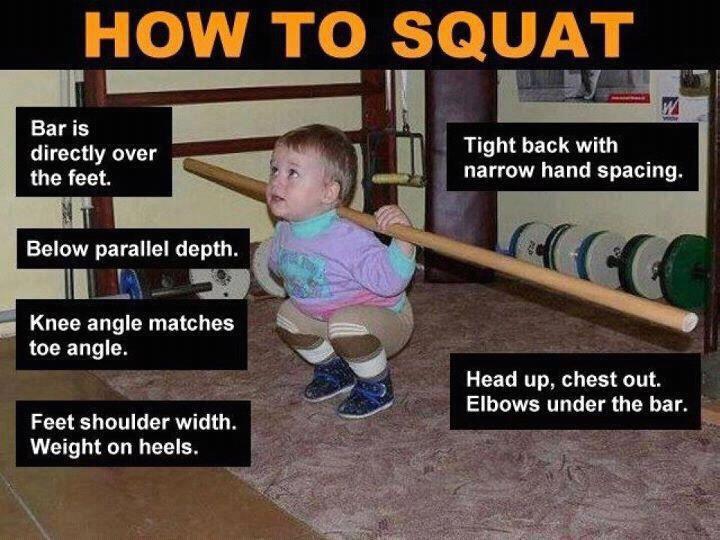The squat is a highly effective compound movement, and the ability to execute a deep, perfect squat is an excellent indicator of midline stability, glute activation and hip, ankle and thoracic mobility. It is a whole body movement with rewards that extend well beyond just leg strength.
I love deep, heavy squats very much, but unfortunately, not everyone feels the same way. Conventional wisdom, propagated by doctors and personal trainers, has long argued that you should never squat below parallel, and if you dare go ass to grass your knees will explode, your back will break and you will die. Here’s why we need to put an end to this myth.
1. The below parallel squat is a natural human position
Men and women have been squatting low from the dawn of time. It is only recently that we started favoring chairs, rather than squatting, as a resting position. Ever noticed how effortlessly kids are able to drop into a squat? It is in adulthood, when we spend all our time sitting, that we lose this ability. To read about the whole host of problems this has caused us, check out this great article here.
2. Full squats are actually better for your knees
Research has repeatedly disproved the idea that squatting below parallel is bad for your knees. Check out this article for links to various studies. A 2013 Sports Medicine study found that the highest compressive force on the knee actually occurs when it is at 90 degrees of flexion. The same study concluded that deep squats do not contribute to increased risk of injury to tissues, and that concerns of increased risk of osteoarthritis and damage to the patellofemoral joint are unfounded.
Not only will deep squats not cause your knee to explode, they will also increase joint stability by strengthening the soft tissues. Moving the knee in full range of motion develops the soft tissue around the knee, strengthening muscles, ligaments, tendons and cartilage.
3. Do them properly and minimize the risk of back and knee injury
A correctly executed squat sends the hips back and the knees out, loading the hamstrings, rather than just the quads. The majority of the force is on the hips, which are surrounded by big, powerful muscles, protecting the knees.
The torso will lean forward a little (particularly on a back squat) as the hips to drive back. Often, in an attempt to stay vertical, squatters end up shooting your knees forward instead, failing to engage the hamstrings and glutes. The deep squat is an excellent lower back and core stability exercise, as you must brace and maintain lumbar curve for the duration of the movement. Lower back injuries occur when people are squatting incorrectly and failing to maintain a neutral spine by either overextending (excessive arching) or losing lumbar curve and rounding.
4. Deep squats = better mobility
Achieving a deep squat requires good hip, ankle and thoracic mobility, and although you may have to specifically target these areas, by just challenging yourself to squat regularly, you will see improvements in mobility. Keep the weights light, or even practice bodyweight squats, and work on getting lower each time. Box squats can be a great way to help you get there, as they let you know how deep you’re going, as well as requiring that you send the hips back and squat correctly
5. You need to squat low if you want Olympic lifting success
Success with the clean and the snatch relies on your ability to receive the bar and drive out of the hole, that is, the bottom of a squat. Getting comfortable squatting heavy weights low, and driving out of the hole will help your Olympic lifts. If you can’t receive a bar in a full squat, comfortably, you will be limited in your success with these movements.
Squatting to full depth is not realistic for everyone, and if you’re super tight, suffer from joint issues, are injured or have inactive glutes, just work with what you’ve got to start. If getting past parallel means you come forward on your toes, or your back starts to round, you need to work on addressing why these things are happening, then slowly start adding depth. Spend the time learning how to squat and developing the necessary mobility, and you will see benefits inside and outside of the gym.












































